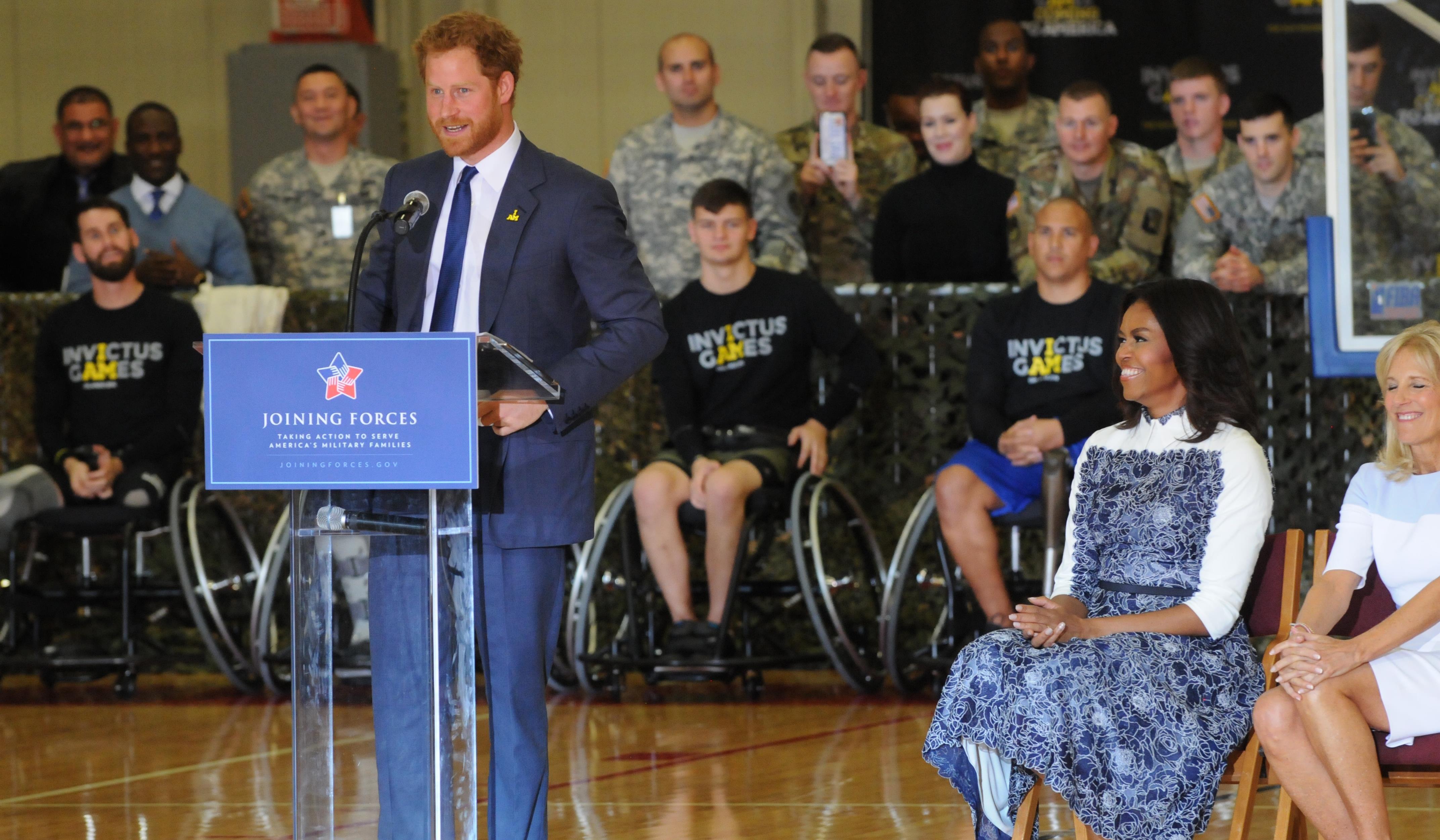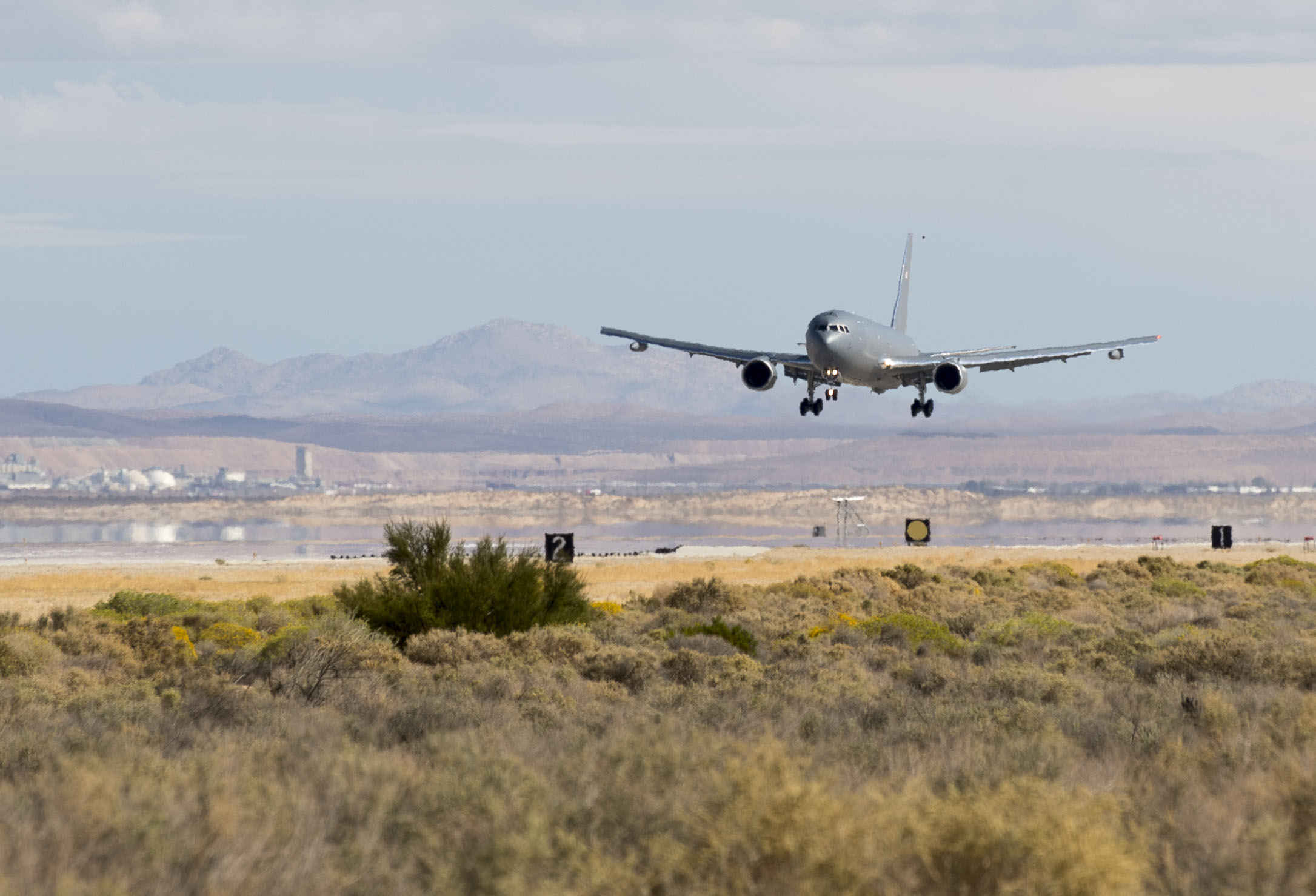By Katie Lange DoD News, Defense Media Activity
FORT MEADE, Md., October 29, 2015 — It's not every day you
get to meet a prince, but several of America's injured service members were
given that chance yesterday, showing off their adaptive sports skills to
Britain's Prince Harry, who visited Fort Belvoir, Virginia, to officially
launch the 2016 Invictus Games.
Prince Harry was greeted by cheers -- and some squeals --
when he entered Wells Field House. He, First Lady Michelle Obama and Dr. Jill
Biden, wife of Vice President Joe Biden, were introduced as if they were the
stars of their own basketball game, slapping hands with the athletes who lined
up to meet them.
"All right, ladies, Prince Harry is here. Don't act
like you don't notice," Mrs. Obama said as the crowd laughed.
But why he was there is a serious subject that's dear to his
heart.
Prince Harry is no stranger to war. He spent 10 years in the
British army and did two tours of duty in Afghanistan -- deployments that he
said "changed the direction of my life." He revealed how, after his
first deployment, he shared a flight home with three British soldiers in comas
and a Danish soldier who had been killed in action. That's when the reality of
war really sunk in.
"From that moment, I knew I had the responsibility to
help all veterans who had made huge personal sacrifices for their countries to
lead healthy and dignified lives after service," he said.
He's trying his best to keep to that promise, including in
America.
Keeping His Promise
In May 2012, Prince Harry met with five injured Defense Department
service members in Washington, D.C., before accepting a humanitarian award for
his charity work with wounded warriors. He then attended the 2013 Warrior Games
in Colorado, which is where the idea for the Invictus Games was born.
"I saw the power that sport could play in the recovery
of both mind and body," he said. "I left Colorado with a
determination to broaden this to an international audience."
The Invictus Games are something retired U.S. Army Sgt.
Blake Johnson is excited about. The 23-year-old, who shattered his knee in a
car crash in Germany, was pumped to show off his wheelchair basketball skills
for the prince and the first lady.
"I think it's great. I'm grateful they gave me the
opportunity to see them," said Johnson, a 2015 Warrior Games participant.
"When I first got involved with [adaptive] basketball, that was the first
team sport I did, and I'll never forget it. That was kind of my turnaround
point. I was like, 'This is making me happy.'"
More than 400 service members from 13 countries competed in
last year's inaugural Invictus Games in London. U.S. Navy Petty Officer 2nd
Class Angelo Anderson, who was shot several times on a combat patrol in
Afghanistan in 2010, was one of them.
"It was just amazing. For [Prince Harry] to have us in
his backyard and welcome us with open arms was huge," Anderson said.
"I think I can speak for all the other athletes in all the other countries
in saying that it was an incredible experience."
"The games epitomized the very best of the human spirit
-- men and women who had not only adjusted to life, but embraced it, proving
what can be achieved post-injury rather than focusing on what cannot,"
Prince Harry said.
Anderson agreed.
"I hope the games inspire the person who can't see past
their injuries and dark times," he said. "It really helps them find
that new normal. You're not just Joe Amputee down the street. You're a Joe that
can help make a difference."
Breaking Down Barriers, Changing Perceptions
The four days of games in Orlando are meant to help the
athletes break down barriers and change perceptions, especially when it comes
to invisible injuries such as post-traumatic stress disorder and people's fear
of asking for help.
"This fear of coming forward as a result of the stigma
which surrounds mental health is one of the greatest challenges that veterans
face today," Prince Harry said. "We have to help them all to get the
support that they need without fear of being judged or discriminated against.
Not only is it OK to talk about it, we have to talk about it."
The first lady said the games are about showing the world
stories of grit, courage and grace.
"These are the stories that our wounded warriors and
their families are living out every single day, whether the cameras are around
or not -- whether we're here or not,” she said. “You guys are doing the work
that makes us proud."
Prince Harry and Mrs. Obama, who spoke before the event's
exhibition game kicked off, also sprinkled in a little friendly smack-talk.
"I guess I should apologize to him in advance for all
the gold medals that America will win in Orlando," the first lady said.
"You better bring it, USA," the prince said in
return.









